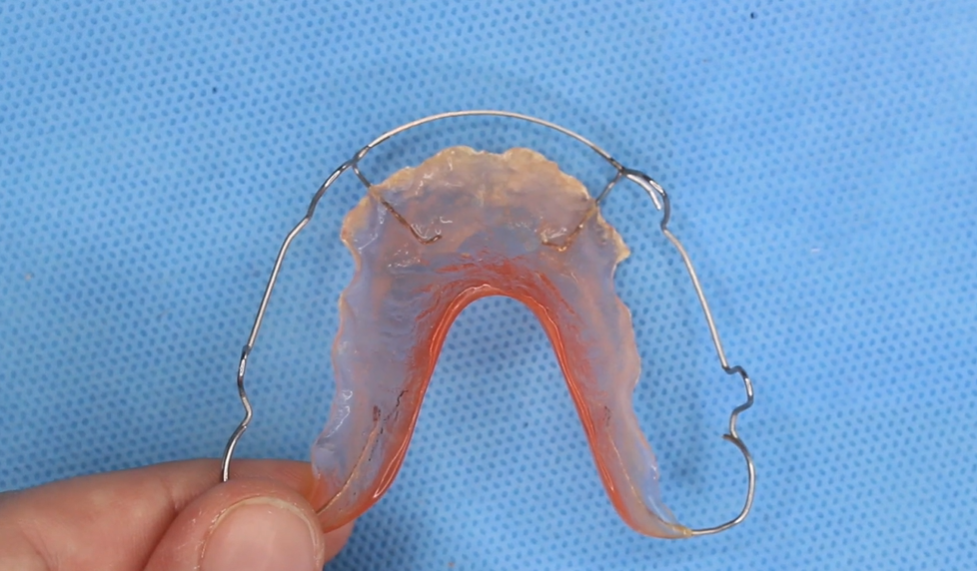If you buy through links on our site, we may earn a small affiliate commission to help support the blog - at no extra cost to you. It never influences our product selection process. Thank you!
Are you considering frenos de dientes (dental braces) to transform your smile? These orthodontic devices have helped millions achieve straight, healthy teeth while boosting their confidence.
Dental braces work by applying gentle pressure to gradually move your teeth into proper alignment. Whether you’re dealing with overcrowding, gaps, or bite issues, modern orthodontic options offer answers for patients of all ages. Today’s braces come in various types—from traditional metal brackets to nearly invisible alternatives—making it easier than ever to find an option that fits your lifestyle and budget.
What Are Dental Braces (Frenos de Dientes)?
Dental braces, known as “frenos de dientes” in Spanish, are orthodontic devices designed to align and straighten teeth. These specialized appliances work by applying consistent pressure to gradually move teeth into their proper positions. Braces consist of brackets attached to each tooth and connected by wires that guide the movement process.
Many patients come to our office with misconceptions about braces. Just last month, Maria, a 32-year-old professional, expressed concern that she was “too old” for orthodontic treatment. After explaining that braces are effective for patients of all ages, she’s now three months into treatment and already seeing remarkable improvements in her smile alignment.
Dr. Todd B. Harris often points out that braces address many dental issues beyond aesthetics. They correct misaligned bites (malocclusions), close gaps between teeth, and resolve overcrowding problems. The primary goal of these orthodontic appliances is creating proper alignment that promotes both dental function and facial harmony.
Braces technology has evolved dramatically in recent years, offering various options to suit different needs and preferences. Traditional metal braces remain popular for their durability and effectiveness, while ceramic braces provide a more discreet alternative with tooth-colored or clear components. Lingual braces attach to the back of teeth, remaining completely hidden from view during normal interactions.
The treatment duration with braces typically ranges from 18 to 36 months, depending on the complexity of your case and how consistently you follow your orthodontist’s instructions. Regular adjustments every 4-8 weeks ensure your teeth continue moving in the correct direction throughout the treatment process.
Types of Dental Braces Available Today

Modern orthodontic treatment offers several types of dental braces to suit different needs and preferences. Each option comes with unique advantages, making it easier to find the perfect solution for your exact dental concerns and lifestyle requirements.
Traditional Metal Braces
Traditional metal braces remain the most common and effective orthodontic solution for patients of all ages. These stainless steel brackets attach to each tooth and connect with flexible archwires to gradually shift teeth into proper alignment. Small elastic bands called ligatures secure the wire in place, and many patients, especially teenagers, enjoy customizing their braces with colored bands to express their personality. Metal braces effectively treat a wide range of orthodontic issues, from simple to complex cases. Dr. Harris notes, “Many of my patients are surprised by how comfortable today’s metal braces are compared to those from decades ago—the technology has improved dramatically.”
Ceramic Braces
Ceramic braces offer the same functionality as metal braces but with improved aesthetics due to their tooth-colored or clear brackets. These less noticeable braces blend with your natural tooth color, making them popular among adults and professionals concerned about appearance during treatment. Some ceramic braces even use tooth-colored wires for additional discretion. The smoother material feels more comfortable against your cheeks and lips, reducing irritation. Sarah, a 28-year-old teacher, shared, “I chose ceramic braces because they’re barely noticeable when I’m teaching, yet they’re effectively correcting my overcrowding issues.”
Lingual Braces
Lingual braces provide complete discretion by attaching to the back surfaces of your teeth, making them invisible from the front. This option appeals to people highly concerned about the visual impact of orthodontic treatment, such as performers, public speakers, and professionals in client-facing roles. The specialized placement requires advanced orthodontic skills for installation and adjustment, often making them more expensive than other options. These braces effectively correct many orthodontic issues while maintaining your visible smile throughout treatment. They require a brief adjustment period as your tongue adapts to the brackets.
The Process of Getting Dental Braces

Dental braces transform your smile through a structured orthodontic journey. The path to straighter teeth follows three main phases, each playing a crucial role in achieving optimal results for your unique dental situation.
Initial Consultation
Your braces journey begins with a comprehensive evaluation by an orthodontist who examines your teeth to determine if orthodontic treatment is necessary. During this appointment, the specialist takes X-rays and creates impressions of your teeth to develop a customized treatment plan addressing your exact alignment issues. These diagnostic tools provide a complete picture of your dental structure, including tooth positioning, jaw relationship, and potential growth patterns. Dr. Todd B. Harris often reminds patients, “The consultation isn’t just about deciding if you need braces—it’s about creating a roadmap for your unique smile transformation.”
Fitting and Adjustment
The actual placement of your braces involves several precise steps to ensure effective treatment. First, your teeth undergo thorough cleaning and preparation to remove any plaque or tartar, creating an ideal surface for bracket attachment. Next, the orthodontist applies special bonding glue to each tooth and hardens it with a safe blue light to secure the brackets firmly in place. Metal wires are then threaded through these brackets to begin the alignment process, sometimes with bands added around molars for additional anchoring.
Regular adjustment appointments follow every 4-6 weeks, during which your orthodontist tightens or replaces wires and bands to continue guiding your teeth into proper alignment. Before each adjustment, existing components are removed and the braces are inspected for any necessary repairs. One of our patients, Maria, shared her experience: “I was nervous about adjustments, but they’re quick appointments—just 20-30 minutes—and while there’s some pressure afterward, it’s manageable and means the braces are working!”
Maintenance Requirements
Proper care of your braces significantly impacts treatment success and oral health throughout your orthodontic journey. Brushing after every meal with a soft-bristled toothbrush and using special flossing tools designed for braces helps prevent plaque buildup around brackets and wires. Foods that are hard, sticky, or chewy should be avoided as they can damage brackets or bend wires, potentially extending your treatment time.
Regular dental cleanings every 4-6 months complement your orthodontic visits by removing plaque in hard-to-reach areas and monitoring for any developing cavities. Treatment duration varies based on the complexity of your case, typically ranging from 18 months to 3 years. Consistent maintenance not only protects your investment in orthodontic treatment but also ensures the health of your teeth during the alignment process.
Benefits of Wearing Dental Braces

Dental braces (“frenos de dientes” in Spanish) offer important advantages beyond just straightening teeth. These orthodontic devices provide comprehensive improvements to both your oral health and overall quality of life through a series of interconnected benefits.
Improved Oral Health
Braces make daily oral hygiene more effective by properly aligning crowded or gapped teeth. Your ability to brush and floss thoroughly increases dramatically once teeth are properly positioned, reducing plaque buildup by up to 60% compared to misaligned teeth. Patients with corrected alignment report fewer cavities and decreased instances of gum disease in follow-up appointments.
Evenly distributed bite forces prevent excessive wear on exact teeth, protecting your enamel from premature damage. According to recent dental studies, properly aligned teeth reduce the risk of developing temporomandibular joint (TMJ) disorders that cause jaw pain, persistent headaches, and restricted mouth opening. Dr. Todd B. Harris notes, “I’ve seen countless patients find relief from chronic jaw pain after completing their orthodontic treatment.”
Improved chewing efficiency directly enhances your digestive process. One patient, Maria, shared: “After completing my braces treatment, I noticed I wasn’t experiencing the stomach discomfort I’d dealt with for years. My orthodontist explained that my improved bite was helping me chew food more thoroughly.”
Enhanced Appearance and Confidence
Straight teeth create a more attractive smile that transforms your social interactions and self-perception. Approximately 85% of orthodontic patients report important improvements in self-esteem and confidence following treatment completion. Professional opportunities often expand as patients feel more comfortable in interview settings and workplace interactions.
Speech clarity improves as teeth alignment affects pronunciation of certain sounds and phonemes. Many patients experience enhanced communication skills after braces, particularly those who previously struggled with exact consonant sounds. Clear speech contributes to greater confidence in professional presentations and everyday conversations.
Adult orthodontic treatment has become increasingly common, with adults now representing about 20% of all orthodontic patients in the United States. The variety of modern braces options—including metal, ceramic, and clear aligners—makes finding a solution that fits your lifestyle and preferences easier than ever before.
Potential Challenges and Discomfort

Wearing braces typically causes initial discomfort as your teeth begin to shift into their new positions. Many patients experience soreness in the first few days after getting braces or following adjustment appointments. The brackets and wires can create friction against your cheeks and gums, causing irritation that generally subsides as your mouth adapts to the orthodontic appliances.
Eating Restrictions
Certain foods must be avoided during orthodontic treatment to protect your braces and ensure effective tooth movement:
- Sticky foods like caramels, taffy, and chewing gum can adhere to brackets, potentially dislodging them or bending wires.
- Hard foods including nuts, popcorn, ice, and hard candies pose risks of breaking brackets or bending wires, which can delay your treatment timeline.
- Crunchy snacks such as chips, raw carrots, and apples should be cut into small pieces rather than bitten directly to minimize pressure on your front brackets.
- Fibrous meats like steak or ribs often get trapped between braces and teeth, making cleaning difficult and increasing inflammation risk.
One of our patients, Sarah, learned this lesson the hard way when she bit into an uncut apple during her first week with braces, resulting in a broken bracket and an emergency appointment. Cutting foods into smaller, bite-sized pieces allows you to enjoy most of your favorite foods while protecting your orthodontic investment.
Oral Hygiene Considerations
Maintaining excellent oral hygiene becomes more critical and challenging with braces:
- Daily cleaning requires extra time and special tools, as food particles easily become trapped around brackets and between wires.
- Interdental brushes help clean areas between brackets where regular toothbrushes can’t reach effectively.
- Floss threaders or water flossers make handling around wires possible, ensuring you can clean between teeth even though obstacles.
- Fluoride rinses provide additional protection against demineralization and white spot lesions that can form around brackets.
Regular brushing after every meal prevents plaque buildup and reduces the risk of gum inflammation. Many patients find that investing in a water flosser dramatically improves their ability to maintain good oral hygiene throughout treatment. Proper cleaning not only preserves your dental health but also ensures your smile looks its best when the braces come off.
Cost and Insurance Coverage for Dental Braces

Average Costs by Brace Type
Dental braces (“frenos de dientes”) range from $3,000 to $10,000 depending on the type you choose and your treatment complexity. Traditional metal braces represent the most affordable option, while lingual braces (attached behind the teeth) sit at the premium end of the price spectrum. Ceramic braces offer a middle-ground option with tooth-colored brackets that blend more naturally with your smile. Invisalign aligners provide a removable alternative that’s becoming increasingly popular even though their higher price point compared to metal braces.
Dr. Todd B. Harris, our leading orthodontist, notes: “Many patients are surprised to learn about the important price differences between brace types. I always recommend weighing both aesthetic preferences and budget constraints when making this important decision.”
Insurance Coverage Options
Insurance typically reduces your out-of-pocket expenses for braces to around $3,400 for traditional metal options. Coverage benefits are most generous for children under 18 when braces are deemed medically necessary rather than purely cosmetic. Metal braces receive the most consistent coverage from insurance providers compared to alternative options like Invisalign or lingual braces. Insurance can cut your costs roughly in half depending on your exact plan and the type of braces selected.
Take Sarah’s case, for example: “I was quoted $5,800 for ceramic braces, but after my insurance coverage, I only paid $2,900 out-of-pocket. Verifying my benefits beforehand made budgeting for treatment much easier.”
Coverage Limitations to Consider
Most dental insurance plans offer limited orthodontic benefits with a typical contribution of about $1,000 toward treatment. This coverage amount has remained relatively unchanged for decades even though rising treatment costs. Medicaid provides coverage for medically necessary braces for children in all states, though adult coverage varies significantly by location. Adult orthodontic treatment faces more restrictions, with many plans excluding coverage entirely or limiting it to cases of medical necessity.
Insurance plans commonly impose waiting periods before orthodontic benefits become available, requiring patients to be enrolled for 6-12 months before accessing coverage. Lifetime maximums represent another important consideration, as your plan may cap total orthodontic benefits regardless of your treatment needs or duration.
How Long Will You Need to Wear Braces?
The duration of your orthodontic treatment with braces (frenos de dientes) depends on your exact dental condition. Most patients wear braces for approximately 18 to 24 months, though this timeframe varies based on individual needs.
Treatment Duration by Case Severity
Mild Cases: If you have minor alignment issues, your treatment may be completed in just 12 to 18 months. These simpler cases typically involve slight crowding or small gaps between teeth.
Moderate Cases: For moderate dental issues like several crooked teeth or mild bite problems, expect to wear braces for about 18 to 24 months. This middle-range timeline allows sufficient time for proper alignment while not being overly lengthy.
Severe Cases: Complex orthodontic issues such as severe overbites, crossbites, or impacted teeth require longer treatment periods, typically 24 to 36 months or more. Your orthodontist will provide a more precise estimate after evaluating your exact situation.
Factors Affecting Treatment Length
Several key factors influence how long you’ll need to wear your braces:
- Severity of misalignment: More important dental issues require extended treatment time
- Age: Children’s teeth often respond faster to orthodontic treatment than adults’
- Oral hygiene practices: Maintaining excellent oral hygiene can prevent delays in treatment
- Compliance with instructions: Following your orthodontist’s guidance on elastics and accessories ensures steady progress
Dr. Todd B. Harris notes, “I’ve seen patients reduce their expected treatment time by following care instructions meticulously. One of my recent patients, Elena, was initially estimated to need braces for 24 months, but her consistent compliance and excellent oral hygiene helped complete her treatment in just 19 months.”
Modern Orthodontic Advancements
Self-ligating braces systems have shown promise in reducing overall treatment time by allowing more efficient tooth movement. These innovative systems use a specialized clip instead of elastic bands to hold the wire, potentially decreasing friction and enabling teeth to move more freely.
After your braces are removed, you’ll need to wear a retainer to maintain your newly aligned teeth. Retainer use varies by individual but remains an essential component for long-term success of your orthodontic treatment.
Conclusion
Dental braces offer far more than just a beautiful smile. They’re a worthwhile investment in your long-term oral health providing benefits that extend well beyond aesthetics. With today’s diverse options from traditional metal to nearly invisible alternatives you can find a solution that fits your lifestyle and budget.
The journey to straighter teeth typically spans 18-36 months but the results last a lifetime with proper retainer use. Even though temporary adjustments to eating habits and oral hygiene routines the transformation is worth the effort.
Remember that braces aren’t just for teenagers. Adults of all ages can benefit from orthodontic treatment enjoying improved confidence dental function and overall health. Your perfect smile awaits with frenos de dientes as your pathway to better oral health and enhanced self-esteem.
Frequently Asked Questions
How do dental braces work to straighten teeth?
Dental braces work by applying gentle, consistent pressure to gradually move teeth into proper alignment. They consist of brackets attached to each tooth connected by archwires that guide movement. This pressure slowly remodels the bone around teeth, allowing them to shift into their correct positions. Over time, this process corrects issues like overcrowding, gaps, and bite problems, resulting in a straighter, healthier smile.
At what age can someone get braces?
There’s no age limit for getting braces. While many patients get them during adolescence (ages 10-14), when permanent teeth have emerged but facial growth is still occurring, adults of all ages can benefit from orthodontic treatment. The article mentions a 32-year-old professional who successfully underwent treatment. The key factor is having healthy teeth and gums, not age.
What types of braces are available today?
Several types of braces are available to suit different needs: Traditional metal braces (stainless steel brackets with colorful elastic bands), ceramic braces (tooth-colored for a more discreet look), lingual braces (attached to the back of teeth, completely hidden), and clear aligners like Invisalign. Each type offers different benefits regarding visibility, cost, treatment speed, and comfort.
How long does treatment with braces typically last?
Treatment with braces typically lasts between 18 and 24 months, though this varies based on individual factors. Mild cases may require only 12-18 months, moderate cases 18-24 months, and severe misalignments 24-36 months or longer. Treatment duration depends on the severity of dental issues, patient age, oral hygiene practices, and compliance with orthodontist instructions.
What is the process of getting braces?
The process begins with an initial consultation where the orthodontist evaluates your teeth using X-rays and impressions to create a treatment plan. During the fitting appointment, teeth are cleaned, brackets are bonded to each tooth, and archwires are threaded through. Adjustment appointments follow every 4-6 weeks to monitor progress and tighten the braces. The entire treatment journey typically spans 18 months to 3 years.
What are the health benefits of braces beyond aesthetics?
Beyond creating a straighter smile, braces improve overall oral health by making teeth easier to clean, reducing plaque buildup and lowering the risk of cavities and gum disease. Properly aligned teeth protect tooth enamel by distributing bite pressure evenly and can prevent temporomandibular joint (TMJ) disorders. Improved chewing efficiency also aids digestion, contributing to better overall health.
What foods should be avoided while wearing braces?
While wearing braces, avoid hard foods (nuts, ice, hard candies), sticky foods (caramels, gum, taffy), and fibrous foods that can get caught in brackets (corn on the cob, apples unless cut into pieces). Also limit sugary foods and beverages that increase risk of cavities. These restrictions help prevent damage to the brackets and wires, which could extend treatment time.
How much do dental braces cost and does insurance cover them?
Dental braces typically cost between $3,000 and $10,000, depending on the type and treatment complexity. Traditional metal braces are usually the most affordable option. Many dental insurance plans cover a portion of orthodontic treatment, especially for patients under 18, potentially reducing out-of-pocket expenses. However, coverage varies with limitations like waiting periods and lifetime maximums, so verifying benefits beforehand is recommended.
How do I maintain good oral hygiene with braces?
Maintaining oral hygiene with braces requires diligent care. Brush after every meal using a soft-bristled toothbrush at a 45-degree angle. Use specialized tools like interdental brushes, floss threaders, or water flossers to clean between brackets and under wires. Rinse with fluoride mouthwash to protect enamel. Regular dental cleanings every 6 months are also essential to prevent plaque buildup and maintain gum health.
Is wearing a retainer necessary after braces are removed?
Yes, wearing a retainer after braces is absolutely necessary. Retainers prevent teeth from shifting back to their original positions by maintaining the new alignment while bone and tissues stabilize. Initially, most orthodontists recommend wearing retainers full-time for several months, then transitioning to nighttime use. Some patients may need to wear retainers indefinitely, typically at night, to maintain results long-term.






